
April 2022
Car Guy?
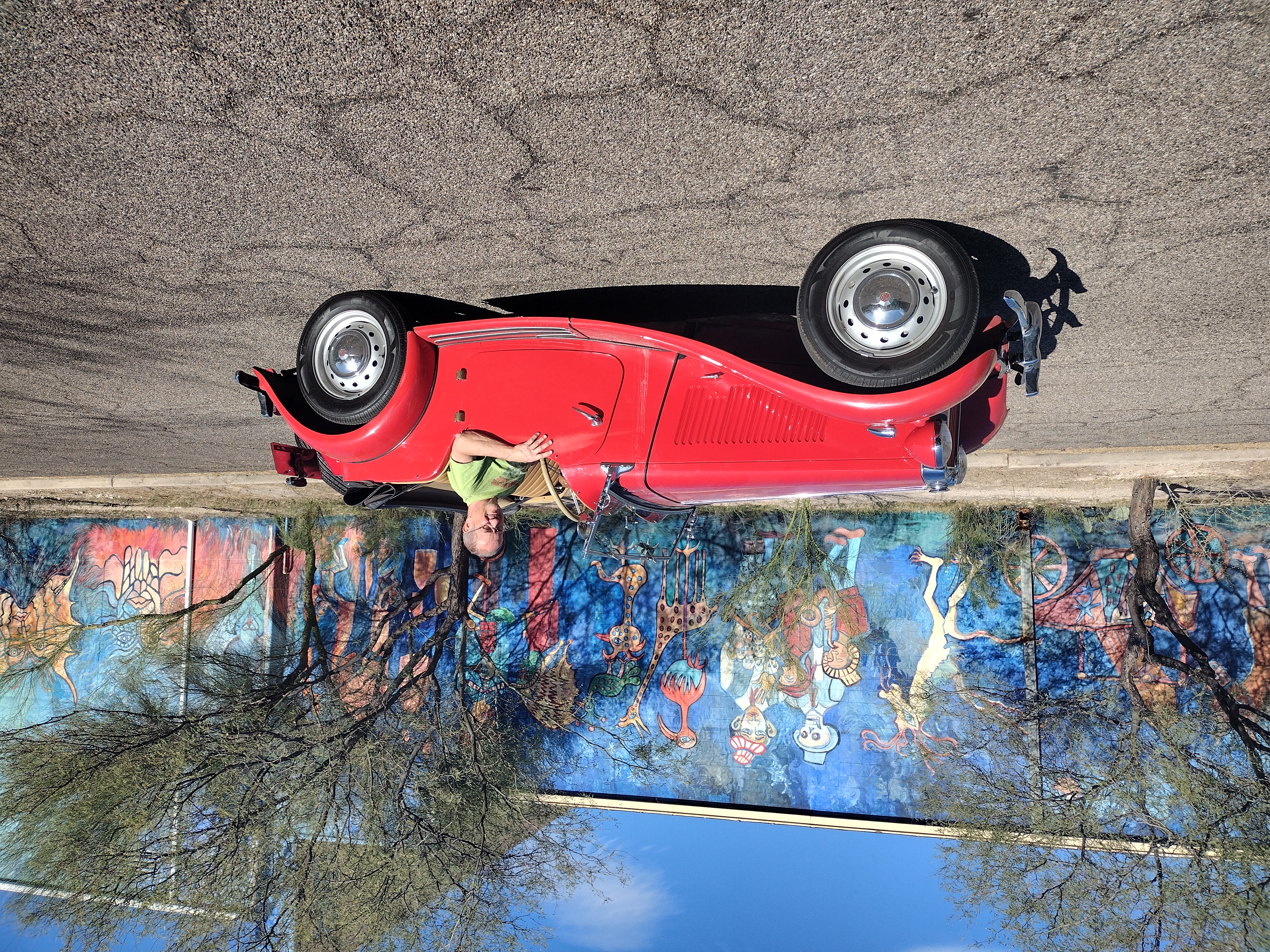
Greetings!
It's been a while since I tried to write anything in this spot. But it's not like I make the Big Bucks like Manfred Schindler, who writes for IEEE Microwave Magazine in most issues. Congrats to Fred on becoming an Honorary Life Member of MTT-S! I'm also in that organization but I'm not even a senior member. I am not looking to get promoted; I never wanted to "be anybody". I'm happy to just be an engineer doing (sometimes) cool stuff. Fred and I grew up less than 10 miles from each other in New Jersey, but never met until we were students at University of Massachusetts, in the very first class of the Lazy-R Ranch's Microwave Masters Program.
Recently someone much younger asked if I was a "car guy", to which I responded "of course". I like older cars, ones that have some history; I like going into car museums, knowing that I have driven cars that are on display. Of the four homes I have owned, all had a slop sink with a can of "GoJo" nearby. Read about the history of Mom-and-Pop soap company GoJo here." I have never paid anyone or company to change oil in my cars, and up until recently I could make the same claim about brake jobs. Apologies to anyone that takes offense at "Car Guy", maybe I should say "Car Person". I've known a few "Car Gals" over the years and they would think nothing of being referred to as a "guy".
"Car Guy" seems like a different term with younger people, they want to impress you with new cars that they are paying off without ever opening the hood. I get the "Tesla" experience... Yes, it accelerates really quickly, and it is cheap to operate compared to gas-powered cars, especially during wartime, until you blow out a tire on a 21 inch rim. Don't ask me to ride with you if you want to demo the hands-off driving experience. I think we are ten years away from being able to trust self-driving cars. That technology needs to be perfected just around the time when the state takes away my drivers license, thank you very much.
My first car was a 1963 MGB roadster I bought for $350. My Mom insisted that I install a roll bar in it, which I purchased from the JC Whitney catalog. Remember them? I spent quite a lot of time and effort fixing that car in an amateurish, low-budget way, I even painted it (and learned what the phase "orange peel" means). It had a positive-ground electric system (positive "earth" to the British), so I installed a voltage inverter to power up an eight-track tape player. Back in the seventies, that meant you had to suffer through an annoying high-pitched tone, as the DC-DC converter was chopping at maybe 20 kHz. The MGB had an electric fuel pump mounted on the tank, and mine would get stuck once and a while, which of course caused the engine to stall. The fuel pump could be restarted simply by smacking it. I learned that when the engine lost power, by veering off a road I could usually find a pot hole to restart it, without having to roll to a stop. I felt like they put rumble strips on roads just for me. All of the electrics on MG products (and British Leyland in general) were supplied by Lucas Electric. It is no wonder that that brand was often called the "Prince of Darkness". Be sure to get home before dark, when driving a classic British car...
I had a lot of fun in that MGB, and I'm glad it did not get killed in it. The end came when an impaired driver hit it while it was parked at a party, and almost broke it into two pieces. The steering wheel pushed back and broke the driver's seat off the floor. Interestingly, a friend of mine had just stepped out of it... he or may not have been smoking an illegal form of cigarette. High or drunk, were able to follow rubber tire tracks of the car that hit it, to a nearby suburban garage, attached to the house where the driver was hiding out in his bedroom. "Honest, officer, Alex hasn't left the house all night", his Mom said... Somehow that police officer got her to open the garage door...One takeaway from this ending is there is always a risk to driving old cars, if you get in an accident you will not be protected by crumple zones and airbags. So when you drive it, you need to pay extra attention to what stupid people are doing around you. I was happy to collect the insurance check, then bought a 1967 Chevy Bel Air for $175. I painted a skull and crossbones on the hood and "coop de ville" on the trunk of that car, free-hand with a paint brush, probably after a six-beer day carrying bricks for my summer job. I hope to find a photo of the Bel Air, that I can post here. I was able to negotiate the $175 price down from $250 from a used car dealer in Pine Brook NJ, by pointing out that the front seat hinges were broken and the seat back was held up with a broom stick. It had a two-speed "PowerGlide" automatic transmission that I would shift into reverse at 50 miles per hour, smoking the rear tires and while spinning out, to amuse my terrified passengers. Car Guy, indeed...
MG "Roadster" means "convertible"... the MGB-GT with a real roof didn't appear until 1966. The MGB-GT might be the architype of the modern "sports car" hatch-back. I also had one of those for a while, it had a real overdrive. The word overdrive means that in your highest gear ratio, the output shaft rotates faster than the input shaft. In the old days, an "overdrive" meant a second transmission casing that provided direct drive and overdrive using a planetary gear system. The MGB overdrive was switched with a solenoid from the turn signal stalk, and only engaged in third and fourth gear, giving you six speeds. There was nothing cooler than coming off a highway ramp and flawlessly downshifting without touching the clutch. Here's a picture showing the four speed versus the overdrive MGB transmission. Hmm, that gives me an idea... how about a cool song about a "hot rod" Model A with a flat-head V8 and overdrive? When Commander Cody describes "man alive, I shoved it on down into overdrive", he is talking about the Borg Warner R10 or R11 unit, learn how to operate it here.
Over the years I got involved in rehabbing some properties and website development, which changed priorities for my limited free time. Getting close to retirement has made me think about what I like to do... it turns out I still like old cars. I just bought a 1952 MGTD, which looks and runs well, but had had a driveline transplant at some unknown time in the past. Instead of the 1250cc 1952 engine, it now has 1800cc MGB motor from the 1960s, and the MGB transmission was grafted on as well. It's a tight fit but it was done pretty well, and probably gives that TD a top speed approaching 90 miles per hour, something I have no desire to experience. The donor car has to be pre-1968, the tell is that the earlier MGBs did not have synchromesh in first gear. Neither did the original Ford Mustang! I'd estimate that only one person out of ten today could tell you what a synchronizer even does. I feel sorry for mechanical engineers that work on car transmissions, electric motors will make that skill go the way of the Dodo bird.
The MG-TD was built to look like a 1930s car, particularly revealed in the engine hood (bonnet if you are British) and separate headlights like you would see on a Ford Model A. Opening the hood is not idiot-proof, as scratches on the headlamps reveal. As they said in Tobacco Road, that "doesn't hurt the running of it none". Those scratches came with the car, I didn't do that. The features of an MG-TD are more about what's missing than what you get... there are volt, ampere and water temperature gauges, but you don't get a fuel gauge. Instead, you drop a dipstick into the tank for a reading. There's no heater, no vents, no turn signals (you need to use your hands), no roll-up windows (but there are snap-on plastic windows if you are driving in the rain) and only a single brake master cylinder. Dual master cyinders were federally mandated in 1967, and a study estimated that that improvement prevented 40,000 accidents and saved 260 lives per year at a cost of $17 per car. Early fifties cars did not have safety belts, this car had them added at some point. The original TD design is not a solid metal car, it has a fair amount of wood components, including a plywood floor. One of the things I checked before I bought it was if the seat belts were anchored to metal or wood... yes, they are bolted to metal. Every day you are alive you should be thankful for regulations that prevent mayhem, cancer, brain damage, birth defects and more. Leaded gas cost me three IQ points! In addition to being able to remove the roof, you can fold down the windshield and get bugs in your mouth. I feel like that feature was to improve aerodynamics in a race, but I don't really know.
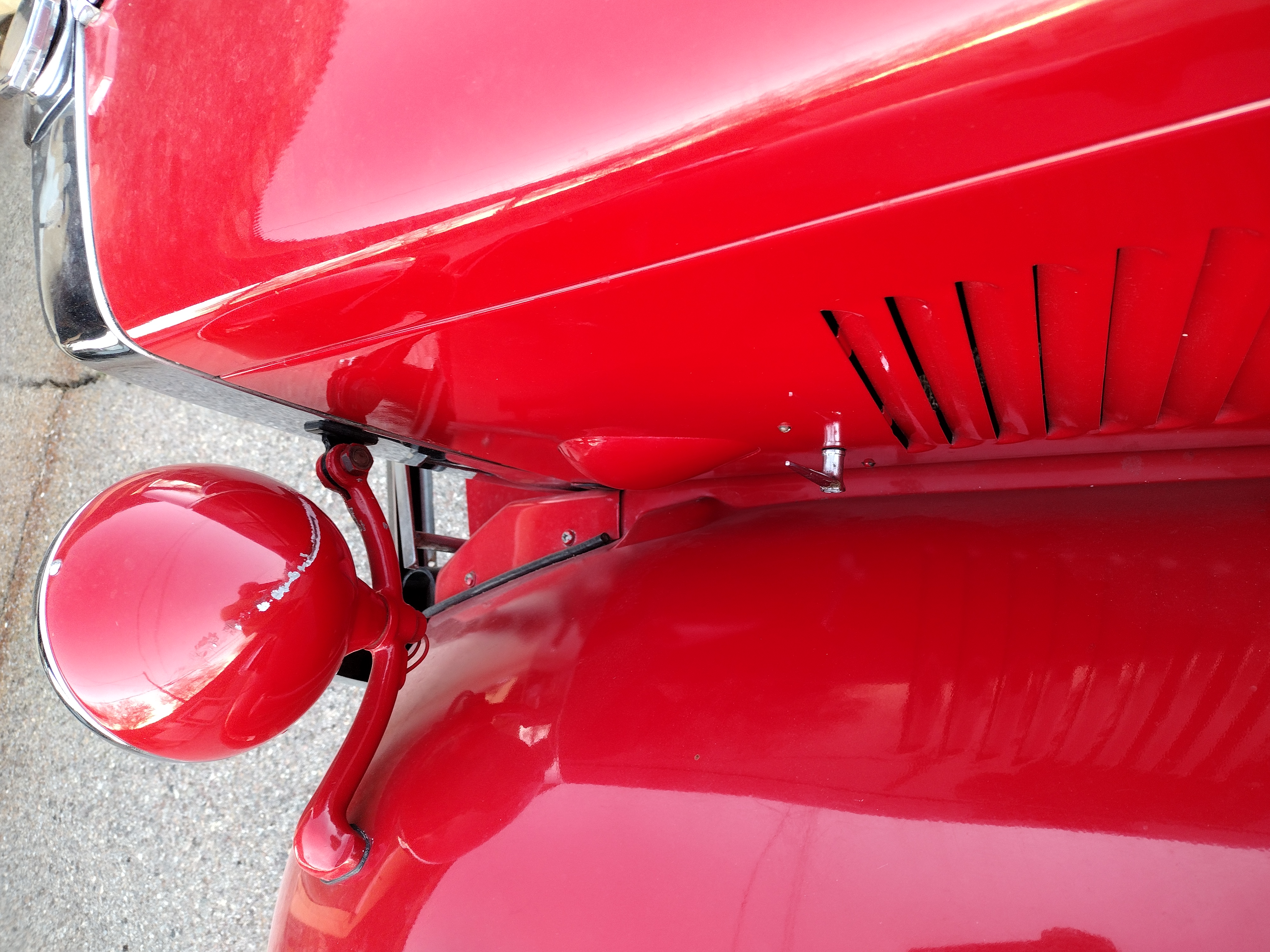
If you look on the bumper you can see a hole in the middle, and another under the radiator. Those holes are there so you could insert a crank to hand-start the engine. Because of the motor swap, that is sadly no longer possible. I have never started a car engine with a hand crank, but I heard many horror stories from my father. He bought his first car, a Model T, for five bucks after the previous owner started it with the car in gear and was injured when the car drove him through the side of a barn. By the way, that cap on the radiator is not for decoration, it is actually where you fill it.
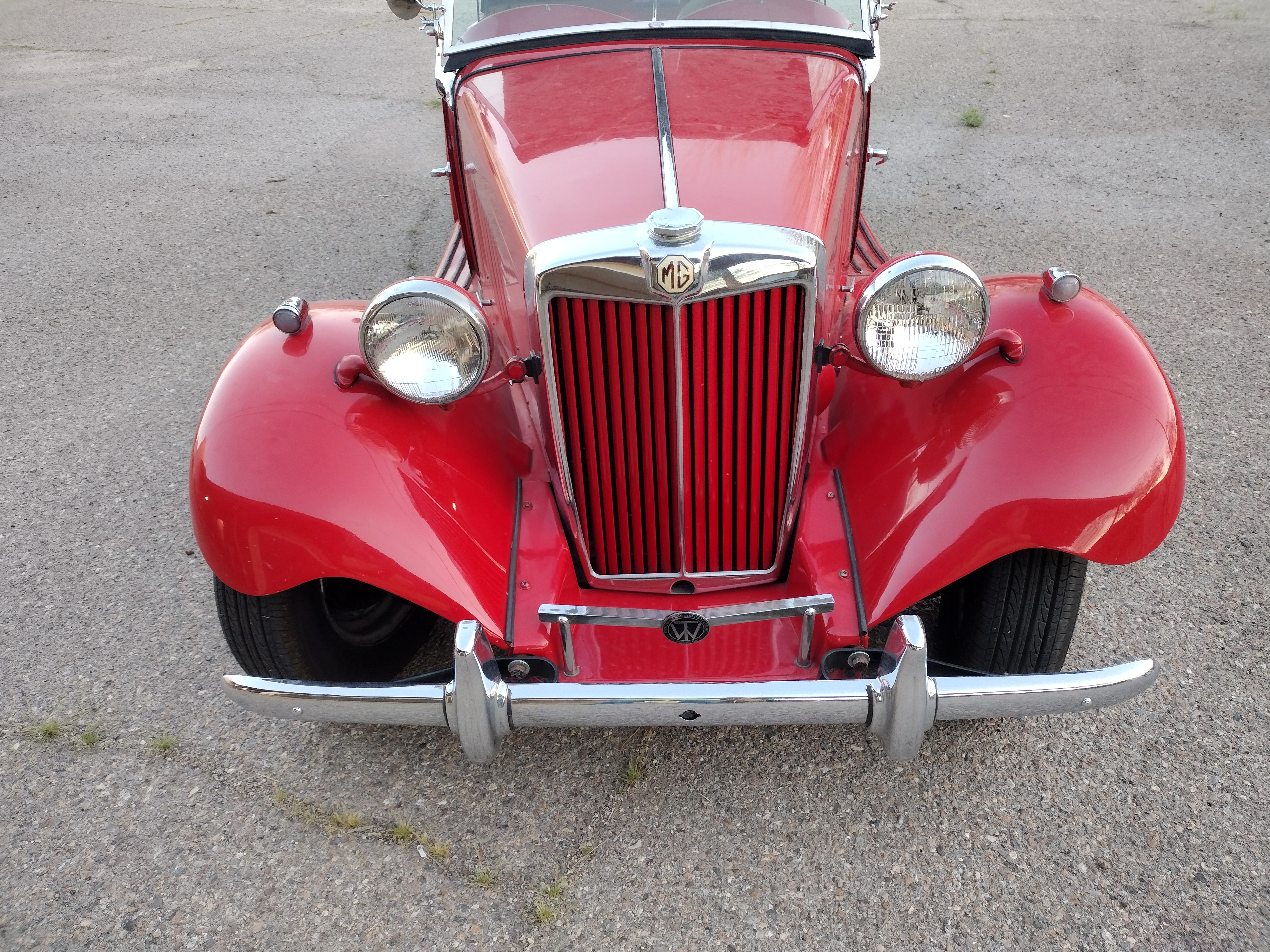
Check put the dual SU (Skinner-Union)1.5 inch carbs. They operate using a piston rather than a butterfly valve. A dashpot is used to damp the movement of the piston, which gives the accelerator pedal a unique feel. If you let your friends try to drive it they will always over-rev the motor during shifts and will privately wonder how you are able to drive it smoothly. The trick is to use all of the muscles in your foot, top and bottom, so that you can move the pedal in a controlled manner. You don't just "step on it". The SU design was patented in 1905, and SU made it through a bunch of mergers but was liquidated in 1995. A friend of mine owned a Datsun 2000 that had a similar set-up, turns out the SU design was licensed to Hitachi. Today, Fuel injection has replaced carburetors, and for good reason. You almost never have to mess with it!
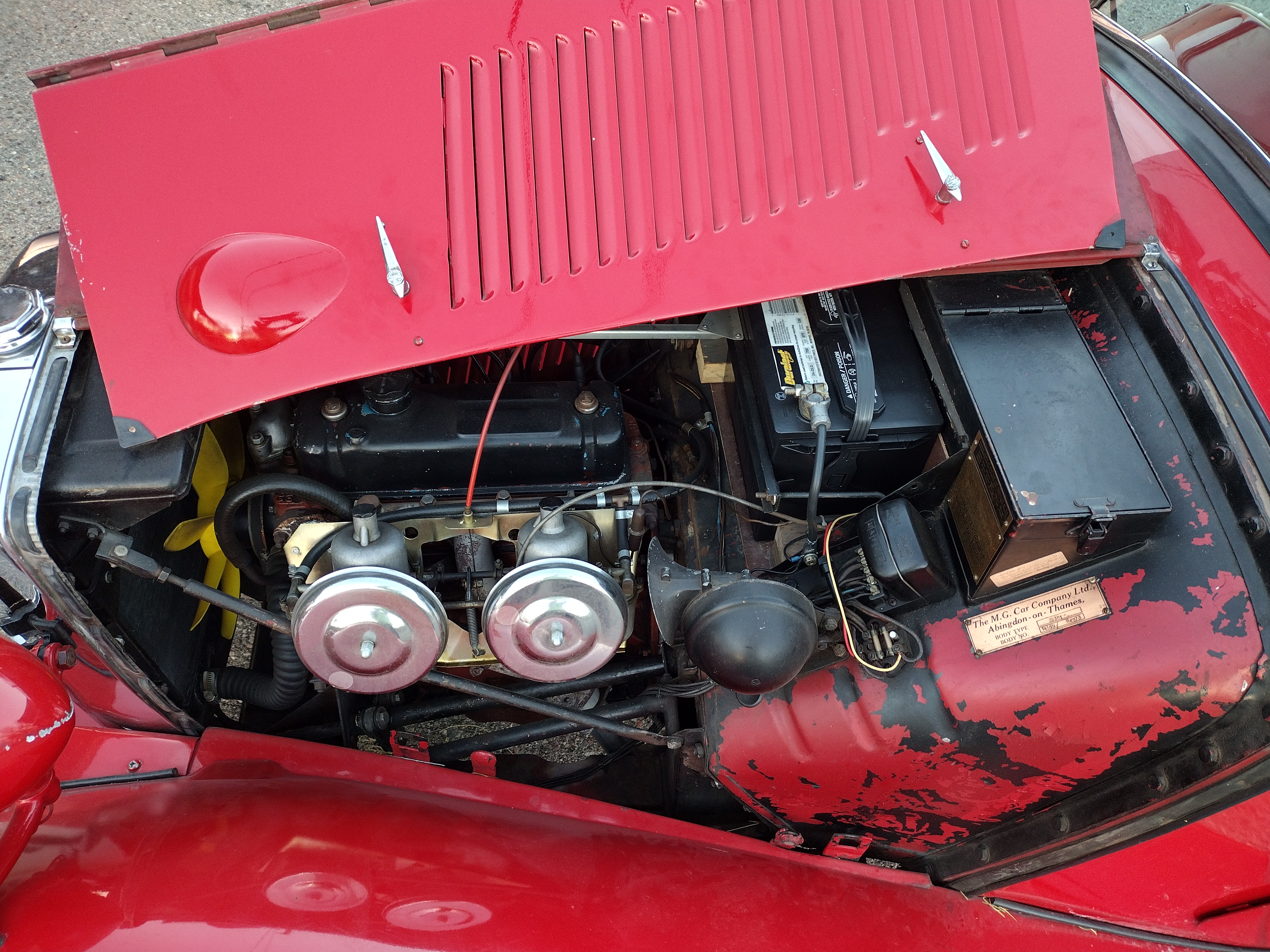
In that photo you can get a glimpse of the original paint color under the hood. it is slightly "more maroon". My 63 MG was also maroon. I am not a big fan of the fire-engine red that the car has been painted, but my intention is to drive it without dropping a lot of money on vanity improvements.
The VIN number cracks me up, seen in the photo below. Today they are maybe 15 digits long. In 1952, five digits was good enough. One of these days I will look up all those patents! The wiring harness uses fabric-coated wires. I have been told that to install a completely new wiring harness costs thousands of dollars. I'll keep an eye out for frayed wires, but live with what I've got.
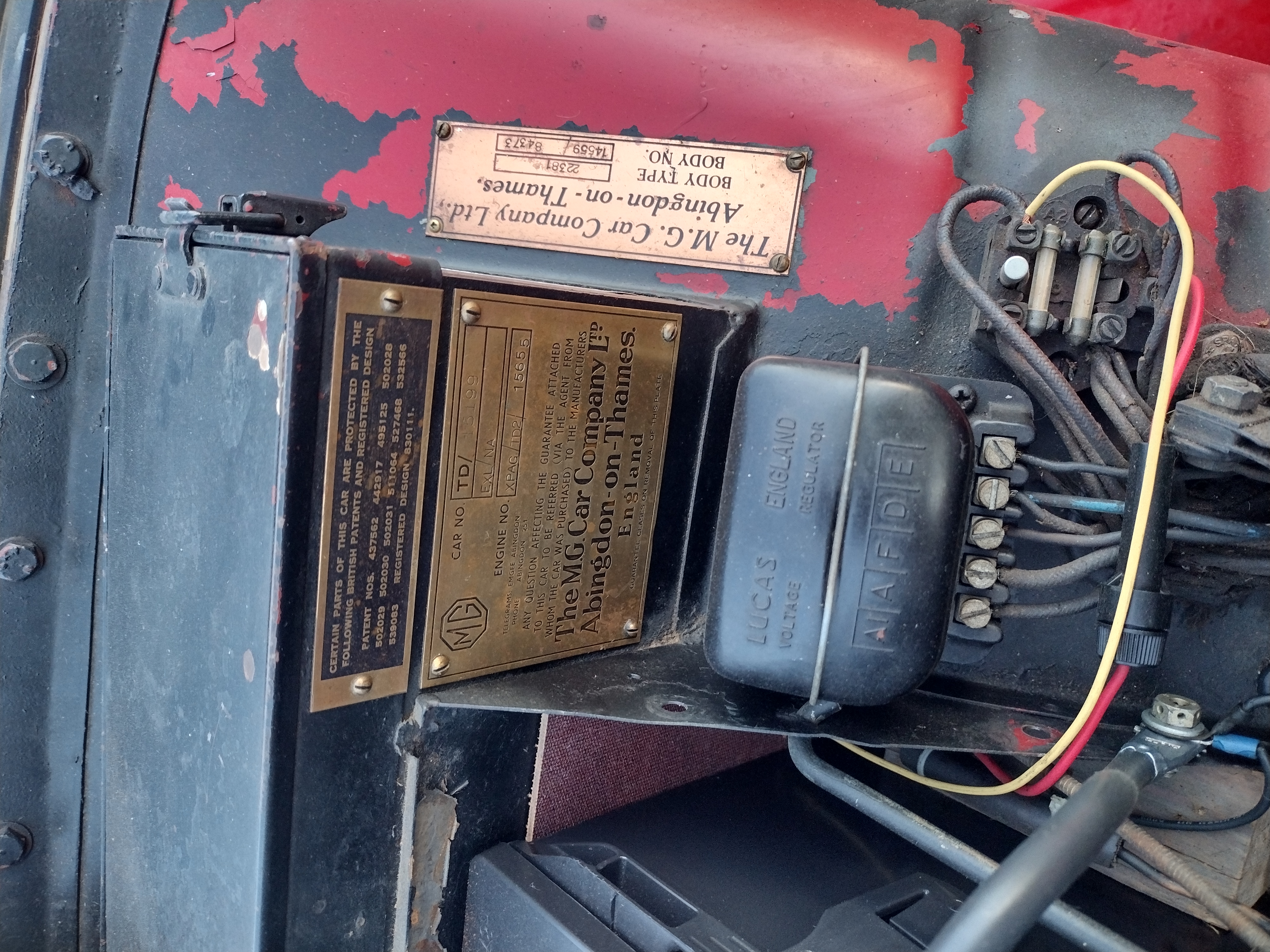
.
Circling back to the tire discussion, the proper inflation pressure on this car is around 20 psi. That seems crazy-low by today's standards, but it has to do with weight. The MG-TD weighs in at around 2000 lbs. including the driver. That puts the same footprint on the street as a 4000 lb. car with 40 psi tire pressure. Another oddity is that an old British car needs 20W-50 weight oil, because tolerances are so loose, and a higher weight oil reduces the amount that gets into the combustion chamber. Modern cars are spec'ed as low as 0W-20. Now that tolerances much improved, lower oil viscosity improves gas mileage.
Although I will not invest in a new paint job on the car, I am on the lookout for an MGB overdrive transmission, sans synchromesh in first gear, to increase the fun. We hope to see some Car Guys at the 2022 Microwaves101 booth at IMS 2022. We'll bring a car artifact, the first person to correctly identify it will receive a $50 gift!
Check out the Unknown Editor's amazing archives when you are looking for a way to screw off for a couple of hours or more!
Fan/hate mail can always be sent to UE@microwaves101.com